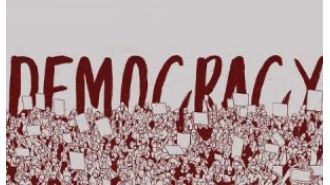Retention
I guess this should be a Feature Friday post but I write my posts based on what I am thinking about first thing in the morning and this is what I am thinking about right now.
I just went to Twitter like I always do first thing in the morning and this is what I saw in my timeline:
Right at the top of my timeline, Twitter is telling me that my friend Mark is active again on his Mediaeater handle. And they follow that with the suggestion that I tweet at him. This is the first time I've seen this kind of messaging from Twitter. And I like it.
If you go back to my 30/10/10 post, you will see that most web services and mobile apps only get 30% of their registered users to use the app at least once a month. The other 70% have largely gone away. But it doesn't mean they are gone for good. Getting them back should be a primary goal of any consumer web or mobile company.
Twitter has been working on this problem for years. I recall getting a presentation from their growth team at least three years ago that detailed how they were working on this problem. And they are still working on this problem. Most likely they will always be working on this problem.
You can email or spam in some other way your inactive users and that might work. But what you do once they come back is way more important. You have to figure out how to make the experience better than it was when they used it previously. Some of that will likely be that the product is much better because your and your team have improved it a lot. But some of that should be an engaging experience that somehow they did not get before.
When we get our various portfolio companies together, I like to ask them if they can identify one or two metrics that separates their successful and engaged users from their unsuccessful and inactive users. Most of the time the metric has something to do with engagement (they left a comment, they got a reply to a comment, they got a like on their photo, they had people follow them, etc, etc). Engaging with real humans, not just the machine, is the key in social systems. And most systems are social in some way.
Your inactive users are important cohort to focus on. There must have been something that got them to sign up for your service in the first place. So focus on getting them back, retaining them, and most importantly, engaging them.








